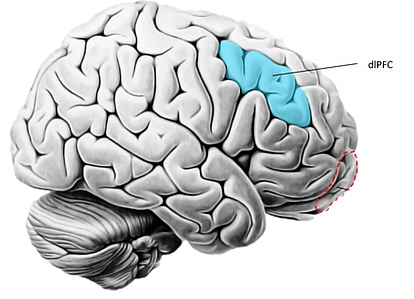The Science of Hypnosis
The goal of hypnotherapy is to induce a hypnotic state in which the patient is deeply relaxed and focused. The patient is more receptive to positive suggestions in this state, which enables the therapist to present concepts and viewpoints, to encourage constructive change. The therapist facilitates this process, and the patient should actively participate in the therapeutic process. The best candidates for hypnotherapy are those who are self-aware of their problems and genuinely want to change, but struggle to do so due to internal blocks.

Internal Blocks
"I have been trying to change for years. Why can't I do it?"
Subconscious obstacles known as internal psychological blocks, prevent people from changing their detrimental behavior, even when they are motivated and self-aware. These blocks, which influence behavior and emotional reactions, frequently stem from early life experiences and are reinforced over time.
What are the root causes of
self-sabotaging attitudes or perceptions?
Environmental & Social Influences
-
Family Dynamics: dysfunctional relationships, early attachment issues
-
Peer influence and Bullying: negative peer interactions during adolescence
-
Cultural and Societal Norms: cultural stigma, unrealistic expectations and discrimination
Biological & Genetic Factors
-
Genetic pre-disposition to mood-disorders, ADHD, anxiety, depression
-
Hormonal imbalances: neurochemical irregularities (e.g. serotonin, dopamine) or chronic illness
-
Sleep deprivation or poor nutrition
Trauma & Adverse Life Events
-
Childhood abuse or neglect
-
Bereavement, chronic illness, accidents
-
Domestic violence or exposure to community violence
Substance Use & Addictions
-
Alcohol, drugs or behavioural additions (e.g. gaming, social media)
-
Substance use often masks emotional pain, reinforces escapism and impairs judgement
Cognitive & Psychological Factors
-
Negative Core Beliefs (e.g. "I'm not good enough", "The world is dangerous")
-
Cognitive Distortions: catastrophising, black-and-white thinking, victim-mentality
-
Unresolved Grief or Guilt: suppression or denial of grief, presents as psychosomatic symptoms, substance dependency or irritability
Learned Behaviours & Conditioning
-
Repeated exposure to certain environments or re-inforcement patterns (e.g. avoiding anxiety-triggering situations, rewarded with temporary relief), can maintain phobias or compulsive behaviours
-
Modelling from parents or social media (e.g. toxic masculinity, perfectionism, self-critical) can be unconsciously adopted over time
Is there a link between early brain development
and lifelong outcomes in adulthood?
Yes, there is a strong correlation between the two. The brain develops quickly from birth to early childhood. It attains roughly 80% of its adult volume by the age of three, and 90% by the age of five. Trillions of synaptic connections are formed throughout this growth, which aids in the development of cognitive, emotional, and sensory abilities.
Certain windows of time known as "critical periods" occur when the brain is particularly responsive to environmental stimuli. E.g., early exposure is the most effective time for learning languages; missing this window might mean it's more challenging to learn it later on.
During early childhood, much of learning and experience processing occurs at a subconscious level. Children absorb information from their environment without conscious awareness, forming implicit memories and behavioral patterns.
_edited_edited_jp.jpg)
As the prefrontal cortex matures, typically around age 7 to 8, children develop enhanced executive functions, including reasoning, planning, and impulse control. This maturation marks a shift from predominantly subconscious processing to increased conscious awareness and self-regulation.

How can Hypnotherapy change my internal narrative?
An efficient way to recognise and get overcome internal blocks, is through Hypnotherapy.
This technique can assist:
1. Reach the Subconscious Mind
Hypnosis makes it easier to communicate with the subconscious, which is home to deeply rooted behaviors and beliefs.
2. Reframe Negative thoughts
Hypnotherapy can assist in transforming limiting thoughts into powerful ones by using suggestion and guided imagery.
3. Increase Self-Awareness
By encouraging introspection, hypnotherapy helps people comprehend the causes of their internal roadblocks.
4. Encourage Behavioral Change
Hypnotherapy facilitates the adoption of new, healthier behaviors by addressing the underlying causes of resistance.
What are the changes to the brain,
during Hypnosis?
Studies have shown that hypnosis can lead to changes in brain activity, particularly in areas associated with attention, perception, and emotion regulation. Functional imaging has revealed alterations in the anterior cingulate cortex and prefrontal cortex during hypnosis, suggests a neurological basis for its effects.
Hypnosis narrows the individual's focus, reducing external distractions and enhancing internal awareness. This concentrated attention allows for deeper engagement with therapeutic suggestions.
Brain activity during Hypnosis
1. Reduced Activity in the dACC
The dACC is responsible for self-monitoring and evaluating external stimuli. Hypnosis encourages reduction in dACC activity, correlates with decreased self-awareness and critical judgment, which facilitates deep absorption of positive suggestions for behavioural change.

2. Reduced Connectivity between DLPFC & DMN
The DLPFC manages executive functions and the DMN is responsible for self-referential thinking and mind-wandering. Hypnosis leads to decreased communication between these regions, resulting in diminished self-consciousness and a heightened focus on the present.
This illustration shows how different parts of the brain work together. It shows the default mode network (DMN), active during rest and daydreaming, the executive control network (ECN), area that helps with focus and decision-making, and the salience network (SN), helps with noticing important things.
The DLPFC, the part of the brain that helps with thinking and planning, is shown as an important part of the ECN. This diagram shows how the DLPFC connects & interacts with the DMN.

3. Enhanced Connectivity between the DLPFC & the Insula
The insula processes internal sensations and emotional states. Increased interaction between the DLPFC and insula during hypnosis, improves integration of cognitive control with body awareness. As a result, Hypnosis is effective at moderating pain and processing emotions.


The image on the left, highlights the DLPFC, the part of the brain that helps with thinking and planning, in blue.
The image on the right, highlights the Insula, the part that processes internal sensations and emotions, in pink-blue.
Hypnosis increases the interaction between these two regions, leading to increased mind-body awareness to moderate pain and process emotions.